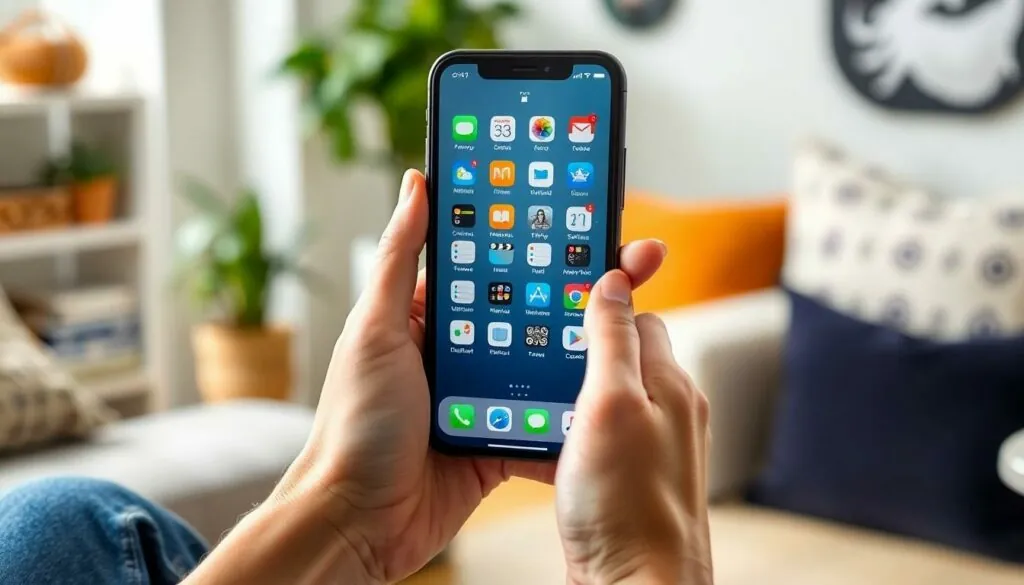In a world where privacy feels like a luxury, hiding apps on an iPhone can be a game changer. Whether it’s that embarrassing game you can’t stop playing or an app that’s just too personal for public eyes, sometimes discretion is the better part of valor. Luckily, Apple’s got your back with some nifty tricks that’ll keep those secrets tucked away, like a magician pulling a rabbit out of a hat.
Table of Contents
ToggleUnderstanding App Hiding on iPhone
Hiding apps on an iPhone enhances user privacy and organization. Numerous methods exist to conceal apps from immediate view. Users may wish to hide apps for various reasons, such as personal information or embarrassing content.
First, using the App Library provides a simple way to manage visibility. The App Library, introduced in iOS 14, compiles all apps into categorized folders. Apps can be removed from the home screen without deleting them by dragging them to the App Library.
Second, restricting access through Screen Time features can provide an extra layer of security. By enabling Screen Time, users can choose to hide specific apps. This action not only conceals the app from prying eyes, but it also secures it with a passcode.
Third, creating folders can efficiently organize home screen space. Grouping similar apps into folders enables users to minimize clutter. Apps can be hidden within folders by dragging them into a new category, making them less noticeable.
Fourth, users can leverage app restrictions to hide specific applications. The settings menu allows users to select content restrictions. By specifying which apps to hide or limit access to, they can ensure sensitive apps remain unseen.
Fifth, utilizing the Hidden Album feature in Photos can help hide specific media. This function, available in the Photos app, conceals selected images from the main library. Users can enable or disable the visibility of this album, providing more control over personal photos.
Each method serves to help maintain privacy and declutter the iPhone experience while ensuring essential functionality remains accessible when needed.
Methods to Hide Apps on iPhone

Hiding apps on an iPhone can significantly enhance user privacy. Various methods exist that allow users to keep personal or sensitive applications out of sight.
Using App Library
The App Library, introduced in iOS 14, provides an efficient way to organize apps. By removing apps from the home screen, users maintain access without clutter. To do this, users must long-press the app icon they want to hide, select “Remove App,” and then choose “Remove from Home Screen.” The app remains in the App Library, where it can be accessed anytime. This method streamlines the home screen and keeps apps discreet while ensuring they remain functional.
Creating Folders
Creating folders on the home screen helps organize apps while also minimizing visibility. Users can group similar apps, reducing clutter and enhancing privacy. To create a folder, simply drag one app icon over another until a folder appears. Naming the folder can further obscure its contents. Folders can contain multiple apps, making it easy to conceal private applications among less sensitive ones. This method not only improves organization but also adds an extra layer of discretion.
Utilizing Screen Time Features
Using Screen Time features adds an extra layer of privacy when hiding apps on an iPhone. This functionality allows users to control app usage and restrict access to specific applications.
Setting Up Restrictions
To set up restrictions, navigate to Settings, then tap on Screen Time. After enabling it, select “App Limits” to block apps for a specified period. Additionally, use “Always Allowed” to designate which apps remain accessible. Enabling a passcode provides further security, preventing others from altering these restrictions. For impressive results, consider blocking certain apps altogether, keeping them completely out of sight. This process effectively minimizes distractions and keeps sensitive applications unseen.
Hiding Apps from Search
Hiding apps from search can enhance privacy significantly. Start by going to Settings, then tap on Siri & Search. Turning off “Show App” prevents specific apps from appearing in search results. Additionally, disabling “Show in Search” keeps apps from being displayed when using Siri. Each adjustment reinforces privacy by making it harder for others to accidentally discover hidden applications. Users can feel confident knowing these settings help maintain discretion while still granting access to essential functions.
Third-Party Solutions
Third-party applications provide alternative methods for hiding apps on an iPhone. Several options are available on the App Store that specialize in app privacy and organization. Users can explore app lockers, which secure individual applications behind a passcode or biometric authentication. Such solutions ensure only authorized users can access sensitive content.
Additionally, privacy-focused launcher apps enable users to create custom home screens. These screens can display only selected apps, concealing others from view. Often users find this method effective for managing visibility and accessing essential applications without clutter.
Some third-party apps even offer features to disguise themselves as different applications. For example, a popular choice may appear as a calculator while functioning as a secure vault for private photos or messages. This level of concealment provides added peace of mind for those concerned about prying eyes.
Many of these apps support cloud storage, allowing users to hide files and apps seamlessly. When synchronization occurs, hidden content remains safe while accessible from various devices. Some solutions also include additional security measures, such as timed access or stealth mode activation, ensuring maximum privacy.
Users must consider features, reviews, and compatibility when selecting a third-party app. Researching options ensures they choose a reliable solution that meets their specific privacy requirements. With numerous choices available, users can find an app that aligns with their needs while enhancing overall discretion on their devices.
Hiding apps on an iPhone is a practical approach to enhancing privacy and maintaining a clutter-free home screen. By utilizing built-in features like the App Library and Screen Time restrictions users can ensure their sensitive applications remain discreet and secure.
Additionally exploring third-party solutions further empowers users to customize their app visibility according to personal preferences. With various options available it’s essential to choose tools that align with individual needs for privacy and organization.
Taking these steps not only safeguards personal information but also allows for a more streamlined and user-friendly experience on the device.



